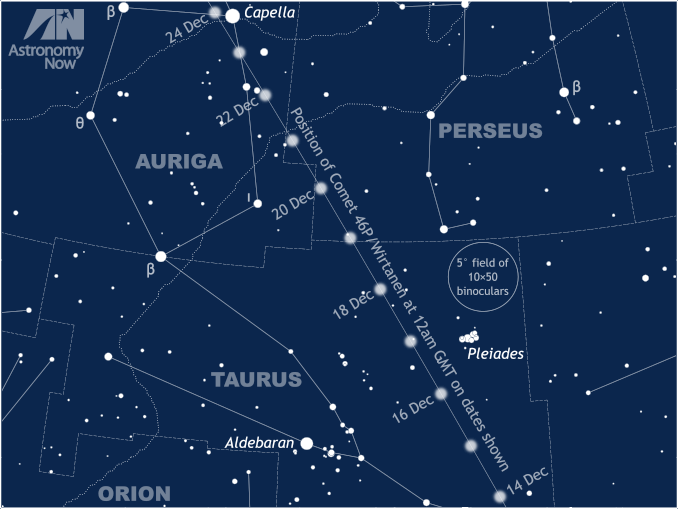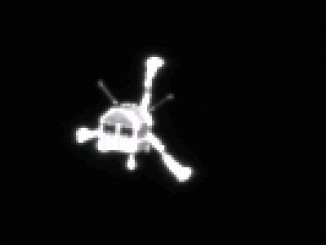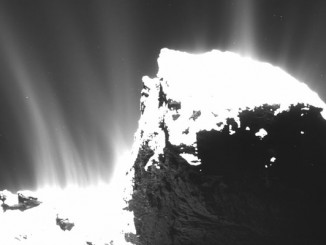
Discovered at the Lick Observatory by American astronomer Carl A. Wirtanen on 15 January 1948, the comet that now bears his name orbits the Sun every 5.44 years. A so-called Jupiter-family comet, 46P/Wirtanen comes within 1.06 astronomical units (AU) of the Sun at perihelion, out to 5.13 AU at aphelion. The icy nucleus of 46P is believed to have a diameter of about 1.2 kilometres (three-quarters of a mile).
Comet 46P passes just 3¾ degrees southeast of the Pleiades at the time it’s closest to Earth at 13 UT (1pm GMT) on Sunday, 16 December 2018. At this time the physical distance between the comet and Earth is 0.0775 astronomical units, 11.8 million kilometres or 30 lunar distances. The comet’s motion relative to the background stars exceeds 4 degrees per day between 14 and 19 December, equivalent to the apparent angular width of Jupiter every four seconds when 46P is closest.
Astrophotographic opportunity
Late into the UK evenings of 15 and 16 December finds Comet 46P between first-magnitude star Aldebaran and the Pleiades star cluster in the constellation of Taurus making identification easier and a superb astrophotographic opportunity. Light from the full Moon of 22 December will drown the comet around that time, but do try to view 46P near bright star Capella in Auriga on the night of 23 December as the pair will be just a degree apart.
Visual appearance
Comet 46P/Wirtanen has an integrated magnitude close to magnitude +4 and may peak around +3 when closest to Earth, but its pale greenish glow is spread over a diameter almost twice that of a full Moon. Consequently, Comet 46P fills the field of view of the lowest magnification eyepiece supplied with most telescopes; it could drift through the field of view and be overlooked with a casual glance.
Given its diffuse appearance and very short tail, 46P is best viewed in low-power binoculars or with the naked eye from a safe, rural observing spot well away from streetlights – but do take 20 minutes to get fully dark adapted. Click here or on the graphic at the top of the page to obtain a scalable PDF finder chart suitable for printing and use outside.



